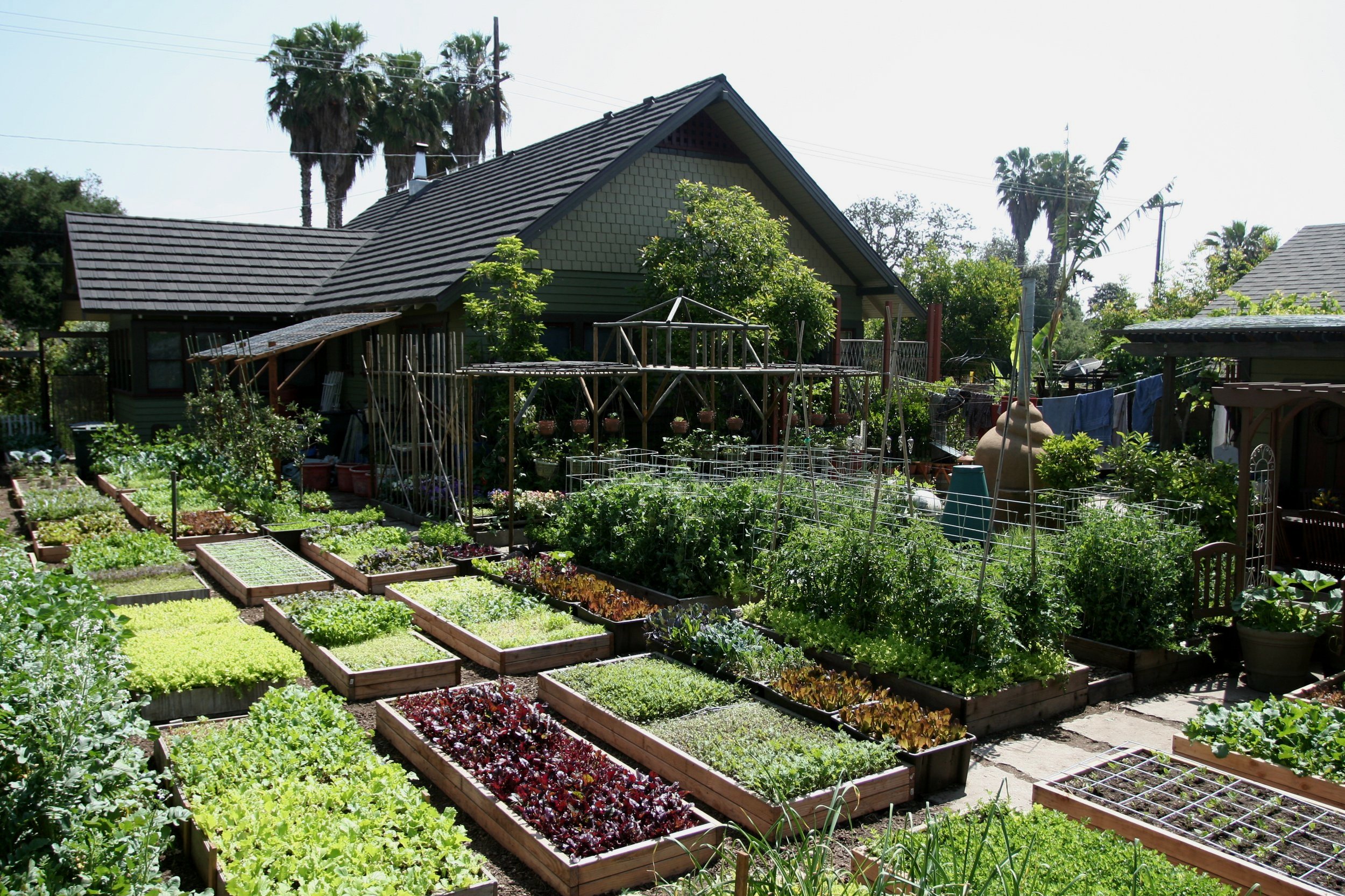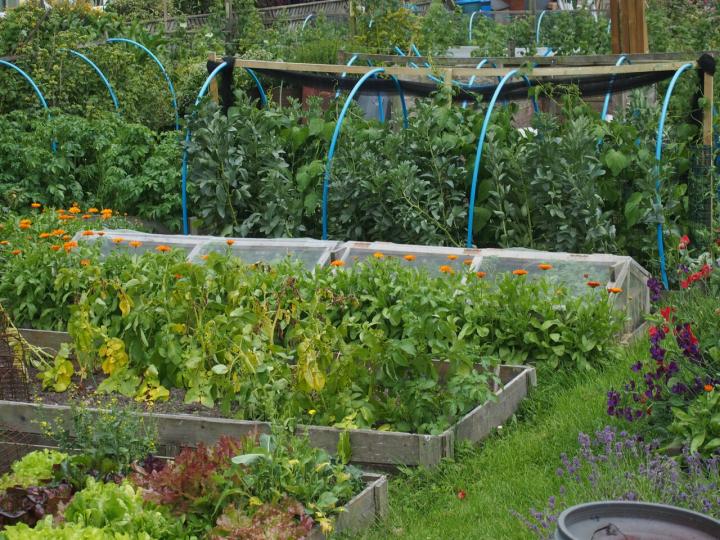The Best Plants to Pair in Homestead Gardening
The Best Plants to Pair in Homestead Gardening
Blog Article
Uncover the Tricks to Creating a Productive and attractive Gardening Room
Creating a gorgeous and productive gardening space is not merely an issue of growing blossoms and veggies; it requires a tactical approach that encompasses various crucial elements. From selecting the right area based on sunshine and dirt type to attentively making your format and selecting appropriate plants, each decision plays a pivotal role in the success of your yard.
Selecting the Right Place
Choosing the optimal place for your yard is vital to its success and general aesthetic charm. The first step in this procedure includes assessing sunlight exposure, as many plants call for at least six hours of direct sunlight daily (Homestead Gardening). A south-facing garden usually gets the most light, while shaded areas can impede development and blooming
Furthermore, consider dirt high quality and drainage. Well-draining dirt is important to protect against waterlogged origins, which can lead to plant illness. Performing a soil examination can give important details regarding pH levels and vitamins and mineral content, enabling you to modify the soil appropriately.
Moreover, proximity to water sources is one more variable to consider - Homestead Gardening. Having easy access to a tube or watering system can simplify the watering process and motivate constant plant treatment. Wind defense is also essential; placing your yard near structures, such as fences or wall surfaces, can secure it from harsh winds that may harm fragile plants
Finally, take into consideration availability for upkeep and harvesting. A well-placed yard permits convenient gain access to, making sure that you can conveniently often tend to your plants without creating undue tension or disturbance. Thoughtful location selection lays the foundation for a flourishing garden.
Choosing Plants Carefully
When selecting plants for your garden, it's necessary to take into consideration variables such as environment, dirt conditions, and personal preferences to ensure a effective and unified room. A detailed understanding of your neighborhood environment will certainly direct you in choosing plants that grow in your specific environment. For circumstances, picking drought-resistant ranges is useful in arid regions, while moisture-loving varieties might be better suited for areas with high rains.
Soil conditions are just as crucial; carrying out a dirt test can reveal pH degrees and nutrition content, permitting you to select plants that will prosper. Indigenous plants are frequently an excellent selection, as they are usually well-adapted to local dirt types and call for much less maintenance.
Show on your individual choices-- selecting plants that resonate with your aesthetic preferences will certainly enhance your pleasure and dedication to preserving your garden. By thoroughly reviewing these factors, you can produce a growing and diverse plant selection that raises your horticulture experience.
Creating Your Yard Layout
With a thoughtfully picked plant option in hand, the following action is to create a yard format that optimizes both beauty and capability. Begin by examining the offered area, taking into consideration factors such as wind, color, and sunshine patterns. A tactical format needs to include various zones, including locations for growing, pathways, and possibly seating.
Start with bigger plants or focal points, such as trees or high perennials, placed tactically to produce aesthetic passion. Layer smaller sized plants ahead to improve depth and texture. Consider the visit growth habits of your chosen plants; taller varieties should be placed at the back or facility of beds, while shorter ones can line the sides.
Including paths not only assists in access for upkeep however also invites expedition. Use materials that enhance the yard's total visual, whether crushed rock, stone, or timber chips.
Additionally, think concerning seasonal modifications and how your format will look throughout the year. Incorporating evergreens along with seasonal flowers can make certain year-round appeal. Ultimately, a properly designed garden format balances the all-natural appeal of plants with practical factors to consider, resulting in a room that is both inviting and effective.
Enhancing Soil Wellness

To enhance soil health and wellness, start by performing a dirt test to evaluate pH levels, nutrition web content, and dirt appearance. Include organic matter such as compost, well-rotted manure, or leaf mold to improve soil structure, water retention, and microbial activity.
Mulching is an additional efficient method; it not just preserves dampness yet additionally subdues weeds and progressively improves the dirt as it damages down. Staying clear of extreme husbandry is crucial, as it can interrupt soil structure and harm advantageous organisms. Instead, take on no-till or marginal husbandry methods to preserve soil integrity.

Maintaining Your Garden Effectively
A well-maintained garden is a source of satisfaction and performance, calling for constant interest to guarantee that plants flourish and the landscape remains welcoming. Reliable garden maintenance includes several key techniques that boost the health and wellness of your plants and the general aesthetic of your space.
Normal watering is vital; nevertheless, it is crucial to tailor your watering schedule based upon the certain needs of your plants and neighborhood climate problems. Mulching can aid keep moisture, subdue weeds, and control soil temperature level. Additionally, timely weeding prevents competitors for nutrients and resources, making sure that your plants thrive.
Pruning is an additional necessary task. It urges healthy development, removes diseased or dead branches, and forms plants to maintain an enticing structure. Furthermore, keeping track of for conditions and insects is essential; early detection and treatment can save your plants from considerable damages.
Fertilization must be executed thoughtfully, making use of organic choices whenever feasible to promote long-lasting dirt health. Lastly, seasonal jobs such as planting, splitting perennials, and getting ready for winter season will guarantee your yard remains lively year-round. By following these methods carefully, you can grow a yard that is both stunning and effective.
Final Thought
Picking a proper place with sufficient sunlight, picking ideal plants, creating a visually pleasing layout, boosting dirt health and wellness, and ensuring normal upkeep are crucial components. By incorporating these practices, one can grow a growing garden that not just improves the landscape however also promotes ecological equilibrium and sustainability.
From choosing the right area based on sunshine and soil kind to thoughtfully designing your format and choosing ideal plants, each decision plays a pivotal duty in the success of your garden. Well-draining dirt is vital to prevent water a knockout post logged roots, which can lead to plant conditions.When choosing plants for your yard, it's necessary to consider variables such as climate, dirt conditions, and individual preferences to make sure a harmonious and efficient room. Eventually, a properly designed yard view publisher site design integrates the natural appeal of plants with practical factors to consider, resulting in a room that is both inviting and efficient.

Report this page